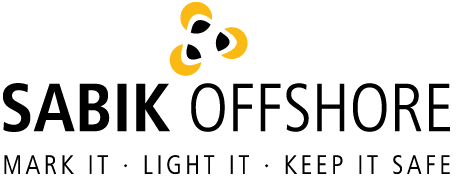Jans-Uwe Reißig, our Regional Manager in Germany and one of the co-founders of the company, talks about the temporary lighting that is required during the construction phase of an offshore wind farm.
What’s the first thing that happens when lighting an offshore wind farm site?
Every project is different. There are two major construction phases, the OSS (Offshore Substation) and turbine installation. Regardless of when each of these are installed, the construction site needs to be secured. This is where temporary lights come into play.
As on land, where a construction site is marked by cones or tape or barriers, the site of an offshore wind farm needs to be clearly marked out and visible as one single obstruction in the water.
To do this, cardinal buoys with a self-contained marine lantern are positioned at key locations. For example, if a windfarm is shaped like a square, cardinal buoys would be at each corner. However, windfarms aren’t typically square though and can be a variety of complex shapes. Thus there may be several more cardinal buoys marking out the perimeter. Intermediate warning buoys can also be positioned at intervals along the perimeter, indicating that there is an obstruction in the water.
As soon as any structure is in the water, such as a foundation (monopile or jacket) or a transition piece (TP), a temporary marine lantern – such as our M850 Self-Contained Marine Lantern – needs to be installed. This may be either on the foundation itself (before the TP is installed), or on the TP cover – used to protect the internal wiring and workings from the elements during construction – or on the railing, if the TP is being installed at the same time. Sometimes we supply just the lights, other times the mounting brackets as well.
Are the requirements for lighting offshore wind farms during construction the same all around the world?
Yes and no! The basic requirements are set out by IALA, but each country can interpret those recommendations differently in their own legislation.
For example, here in Germany, we use white ‘steady on’ lights, whereas much of the rest of the world uses yellow flashing lights! This is another aspect that makes every project different from country to country.
Any hazard must be marked with yellow and white lights. And once a structure is in the water, it needs to be marked. All the individual structures within the construction site need to be marked with a light.
For example, here in Germany, we use white ‘steady on’ lights, whereas much of the rest of the world uses yellow flashing lights! This is another aspect that makes every project different from country to country.
Any hazard must be marked with yellow and white lights. And once a structure is in the water, it needs to be marked. All the individual structures within the construction site need to be marked with a light.
You are currently viewing a placeholder content from Default. To access the actual content, click the button below. Please note that doing so will share data with third-party providers.
More InformationWhy are Sabik Offshore temporary lighting solutions ideal for offshore wind?
Sabik Offshore is the only lighting company dedicated solely to the offshore wind market. When planning for temporary lighting, we have to calculate the darkest periods the light will be in action to make sure the light can charge and have enough battery power. The lights must also be strong enough to withstand the elements offshore. Wind, water and salt can do an enormous amount of damage to sensitive electrical parts.
Depending on where the light will be installed, we will pre-program the special flash characteristics required. Most countries require at least 5NM for temporary lighting. On buoys, generally a wide-angle beam is required; on fixed structures, a smaller direct beam. The developers will install the lights as per local requirements, incorporating any particular design elements in the specification, such as the type of beam and the flash pattern.
A self-contained marine lantern is self-charging via solar panels. Modern high quality LEDs have a high output with lower power usage which allow for smaller lanterns. We still need to check that the light will have enough autonomy where it will be mobilized to endure the long dark winter days. A photocell in the light registers the ambient brightness, and at a pre-programmed level will trigger the light to come on, not unlike the solar lights you might have in a garden.
All temporary lights, whether on a buoy or on a fixed structure, will stay installed and running until the wind farm is fully operational, switched on and we activate the permanent aids to navigation.
If you’d like to learn more, check out our videos about Area Protection and Temporary Marking, or contact your Sabik Offshore local regional expert to discuss the temporary marking requirements for your offshore wind projects.
